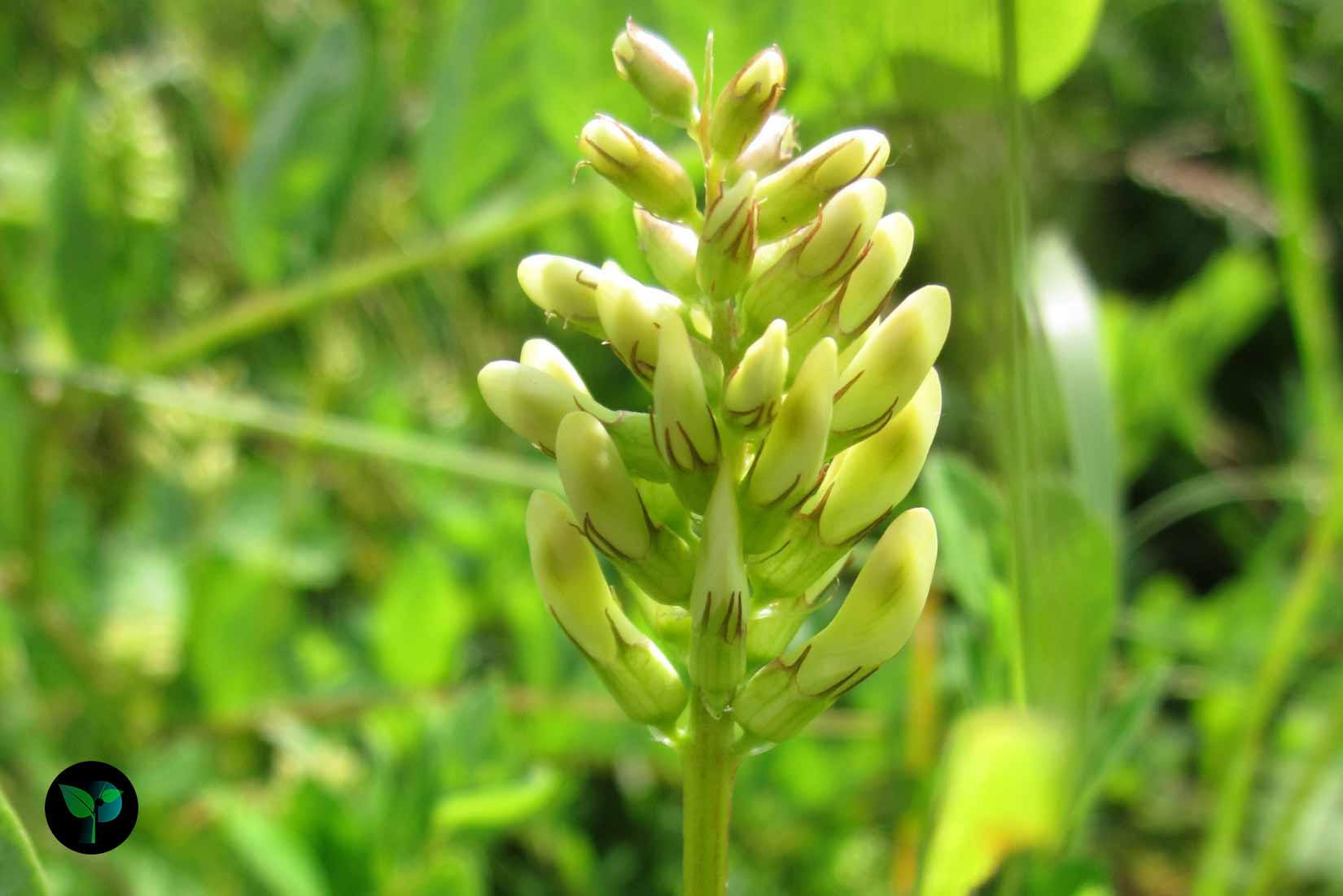The wide variety of medicinal plants and their proven amazing effects on various problems have led to an increase in the desire to use them around the world today. Not only is their use in traditional methods, but it has also become popular in various industries such as cosmetics, pharmaceuticals, etc. Our efforts at Plants Folder are to familiarize you with different plants, their proper use, and sometimes their non-use. In this post, we will discuss the benefits of licorice that have been proven by traditional medicine researchers.
History and Origin of the Plant
The licorice plant, scientifically named Glycyrrhiza glabra, is a herbaceous plant with a height of 1 to 1.5 meters. The habitat of this plant is Western Asia, Southern Europe, and North Africa. Its oval leaves are about 5 to 10 centimeters long. Its flowers are purple or white. The root of this plant is its most important part and has many therapeutic properties.

Properties and Contraindications
This plant is a rich source of nutrients such as vitamins A, C, E, K, potassium, calcium, iron, magnesium, and antioxidants. The liquid extract and powder of this plant are usable. This plant has been used for centuries as a natural sweetener in beverages and medicines.
Helps Treat Chronic Fatigue Syndrome
Chronic fatigue syndrome (CFS) is a disabling disease characterized by severe and persistent fatigue that does not improve with rest. This disease can also be accompanied by other symptoms such as pain, sleep problems, memory and concentration problems, and sensitivity to light and sound. The cause of this disease is still unknown, but a combination of genetic, environmental, and immune factors likely plays a role in its development. Studies have shown that this plant helps improve the symptoms of chronic fatigue syndrome by strengthening the immune system and reducing fatigue, pain, and inflammation.
Impact on Women’s Fertility
This plant affects women’s fertility by increasing the quality and number of eggs, improving ovarian function, and regulating female hormones. It has estrogenic properties and is known as a plant estrogen. Plant estrogens have a function similar to natural estrogen in women’s bodies. This plant also regulates menstruation by lowering androgen hormone levels.
Helping to Treat Stomach Ulcers
Gastrointestinal ulcers are painful sores that develop in the stomach, the lower part of the esophagus, or the small intestine. The cause is inflammation caused by the bacterium Helicobacter pylori. While more research is needed in humans, a 2-week study of 120 adults showed that taking Its extract in addition to a standard treatment significantly reduced the presence of Helicobacter pylori. As a result, its root extract and its glycyrrhizin may help treat stomach ulcers.
Other Benefits of Licorice
In addition to the benefits mentioned above, it also has other benefits, including:
- Treatment of stomach ulcers
- Reducing inflammation
- Protecting the liver
- Reducing blood pressure
- Treating diarrhea
- Reducing cough
- Reducing acne
Warnings
It is a safe and effective herb when used in moderation. However, it can be toxic if taken in high doses. It is important to consult with a healthcare professional before taking licorice if you are pregnant, breastfeeding, or have any underlying health conditions.
Who Should Not Use Licorice?
Both chronic use and high doses of this root products can lead to the accumulation of glycyrrhizin in your body. Now you ask, what harm does glycyrrhizin accumulation do? High levels of glycyrrhizin cause an abnormal increase in the stress hormone cortisol. If you use too much root, you will experience symptoms such as high blood pressure, muscle weakness, and abnormal heart rhythm.
People with high blood pressure, congestive heart failure, kidney disease, or low potassium levels are advised to avoid licorice products containing glycyrrhizin. Also, excessive consumption of this plant during pregnancy may hurt the growth of your child’s brain. This plant interacts with drugs such as blood pressure medications, blood thinners, and cholesterol-lowering drugs, including statins, diuretics, estrogen-based birth control pills, and non-steroidal anti-inflammatory drugs (NSAIDs). People who take any of these medications should avoid this root products.
How to Use
It can be used in a variety of ways. Some of the most common methods of using this root are as follows:
- Brewing its tea
- Taking supplements
- Using its oil
- Extract of the plant
- Chewing root
The dosage of licorice depends on the form you are using. It is important to follow the directions on the label or consult with a healthcare professional.
How to Make Licorice Tea
Ingredients:
1 teaspoon dried root
1 cup boiling water.
Instructions:
Pour the dried licorice root into a cup of boiling water. Let the tea steep for 5 to 10 minutes. Strain the tea and enjoy. For a stronger-flavored tea, you can use 2 teaspoons of its root or increase the steeping time.
Here are some tips for making licorice tea:
- Use dried licorice root. The fresh root can be dried and then used.
- Rinse the root before using.
- Pour the boiling water directly over the licorice root.
- Steep the tea in a glass or ceramic container.
- Drink the tea immediately or store it in the refrigerator.
This tea is a delicious and healthy herbal drink that can be used for a variety of health problems.
Licorice Oil Uses
Oral: its oil can be taken orally. The usual dosage of licorice oil for oral use is 2 to 4 drops per day.
Topical: this oil can be used topically. To use topically, dilute licorice oil with a carrier oil such as olive oil or coconut oil.
Inhalation: its oil can be inhaled. To inhale licorice oil, add a few drops of this oil to a bowl of hot water and inhale the steam.
Licorice is a powerful herb with a wide range of benefits. However, it is important to use it in moderation and to consult with a healthcare professional before taking it if you have any underlying health conditions.



Leave a Reply